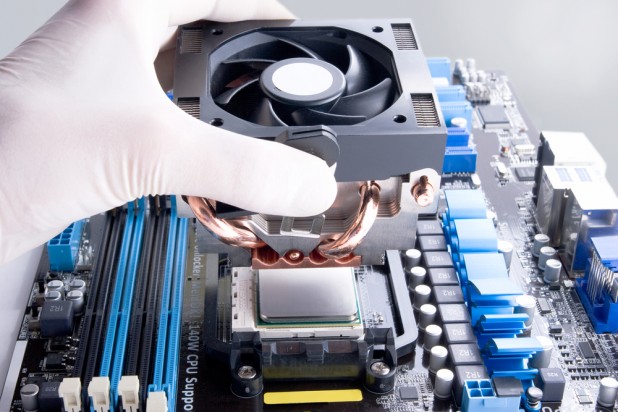
ARM chip architecture powers mobile devices such as smartphones, e-book readers and tablets. If Dell and a handful of other hardware manufacturers get their way, however, ARM will also power an increasing percentage of data centers. That’s because the same features that make ARM valuable in a mobile context—including low power consumption—can also make data centers run more efficiently. Dell claims its internal testing of ARM server technology began in 2010, driven by customer requests for less power-hungry data centers. Now it intends to deliver Dell “Copper” ARM servers to a group of “select customers and partners” (in the company’s words), whom it likely hopes will spread positive word about the experience. Dell is also offering “continued software and ecosystem testing and development” via remote-accessible Copper server clusters, allowing developers to book time with the platform. However, the company has offered no firm release date for the hardware.
ARM and Hadoop Despite having made a lot of money over the years on servers based on x86 architecture, Dell evidently sees ARM something worthy of considerable time and resources. “The company believes ARM infrastructures demonstrate promise for web front-end and Hadoop environments, where advantages in performance per dollar and performance per watt are critical,” Charles King, principal analyst at Pund-IT, wrote in a May 30 research note. “From the beginning, it’s been apparent that ARM’s power efficiency and system footprint make systems based on the architecture appropriate for Web front-end applications (LAMP stack—Linux, Apache, MySQL and PHP), lightweight Oss and distributed applications,” he added. “In fact, ARM support is available today or coming from LAMP, Ubuntu, Fedora, OpenStack, Oracle Java, KVM and Hadoop.” Apache Hadoop, a framework for reliably running applications on large hardware clusters, is prized for its ability to scale from relatively few servers to thousands. Prominent organizations that rely on Hadoop include Facebook, eBay, Hulu, IBM, Microsoft, Twitter, and several universities. Research firm IDC recently predicted that worldwide revenues from Hadoop and MapReduce, another framework for processing problems across huge datasets, would rise to $812.8 million in 2016, fueled in large part by a flood of data from Web-based applications and social networks. In its announcement, Dell chose to emphasize the connection between its ARM initiative and Hadoop. There’s a good reason behind that, according to King: “Because of interest in how ARM might be leveraged in Hadoop environments among the company’s myriad hyperscale customers,” including several search engines and social-media hubs. “That infers a potentially lucrative commercial market, but it also highlights the degree to which the development of Dell’s ARM programs and Copper servers is being driven by its customers.”
Power Efficiency The term “hyperscale” generally refers to data centers that pack together massive numbers of servers—the better to handle the huge and scalable data-loads from, say, a search engine or cloud service. Companies deploying tens of thousands of servers have a need to save money on power and other infrastructure costs, while maintaining as small a physical footprint as possible. Research firms such as IDC often cite power efficiency as a key concern among data center developers. “We are continuously seeking new technologies that can help our Big Data platforms operate at the next level of efficiency,” Amr Awadallah, co-founder and CTO of data-analytics firm Cloudera, wrote in a May 29 statement released by Dell. Dell’s ARM-centric servers, he added, “will allow our customers to pack more processing heft into a smaller data center footprint and do so with a significantly lower energy consumption profile.” Can servers loaded with the same chips as tablets and smartphones handle processing and memory demands with the efficiency of x86-based servers? Research firm Gartner believes that ARM servers will own 15 percent of the server market within four years—suggesting that some organizations will find the use-case scenario for the technology. Dell, along with Hewlett-Packard and some other firms, is betting big that those organizations, like a consumer with a mobile device, will put a premium on lower power use and a smaller footprint.
Image: Your lucky photo/Shutterstock.com

